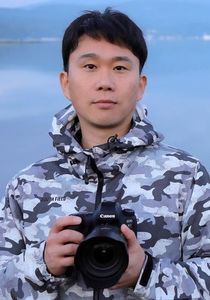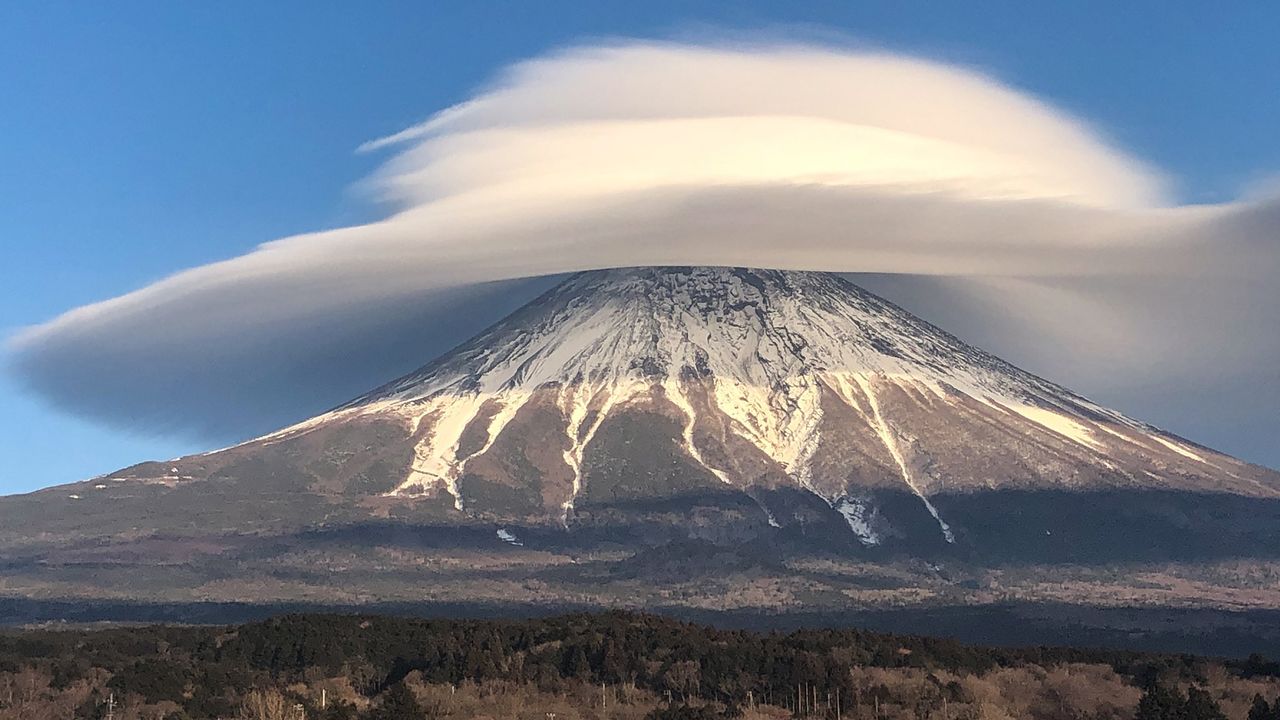
Hashimuki Makoto: Mount Fuji Photographer Par Excellence
Culture Art Guide to Japan- English
- 日本語
- 简体字
- 繁體字
- Français
- Español
- العربية
- Русский
Capturing the Many Moods of the Mountain

Hashimuki setting up his camera at dawn. (© Nippon.com)
I had planned to meet up with the photographer Hashimuki Makoto in the Fuji Five Lakes area of Yamanashi Prefecture at dawn. But in late afternoon the previous day, Hashimuki got in touch to say that we should meet at Lake Tanuki in Fujinomiya, Shizuoka Prefecture, instead. Finally, after 8:00 pm, he sent me a message with a screenshot of a weather map, asking to postpone our meeting, given the high probability of cloud cover the next day. I thought the matter had been settled so I went to bed, but at around 1:00 in the morning Hashimuki streamed video from a live camera trained on the mountain and left a message that he would be going out after all, heading for Nihondaira, an elevated plateau in the middle of the city of Shizuoka, in the hope of capturing the sunrise over the mountain. As I set out on the Tōmei Expressway a few hours later, he sent me the coordinates for his position, and we managed to meet up before dawn.
There’s a saying that anglers and first-rate photographers are similar. The former get their gear together and check the weather forecast for days on end before setting out, and then stand in the same spot, patiently waiting for the “big one” to come along. The same goes with landscape photographers, who select the most suitable equipment for the job, all the while imagining the scenes they will shoot and using their knowledge and experience to pinpoint the best vantage point for obtaining the desired images. The path to excellence lies in prior preparation: Simply going to a site and waiting for a good shot is not a recipe for success.
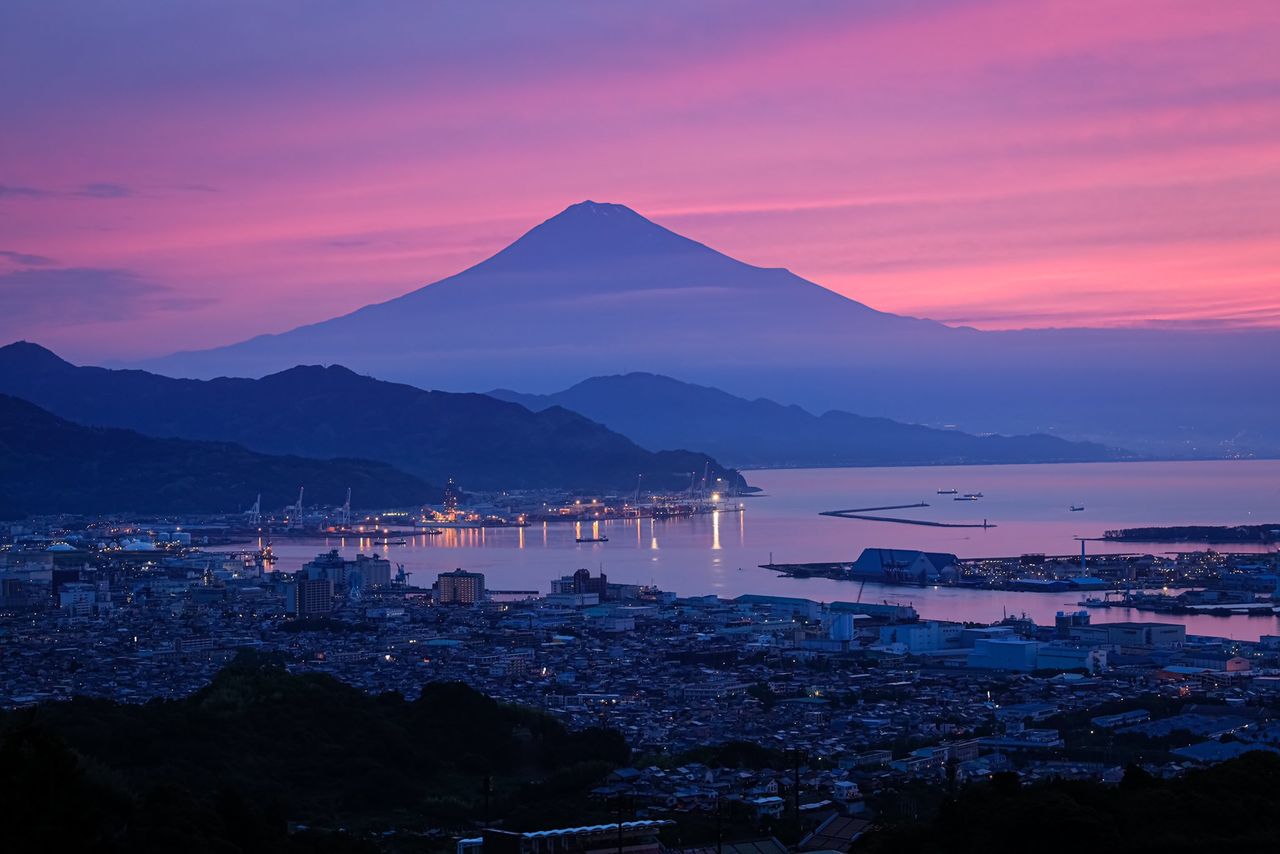
The mountain silhouetted against the sunrise. Hashimuki took this photo from Nihondaira and uploaded it immediately to social media.
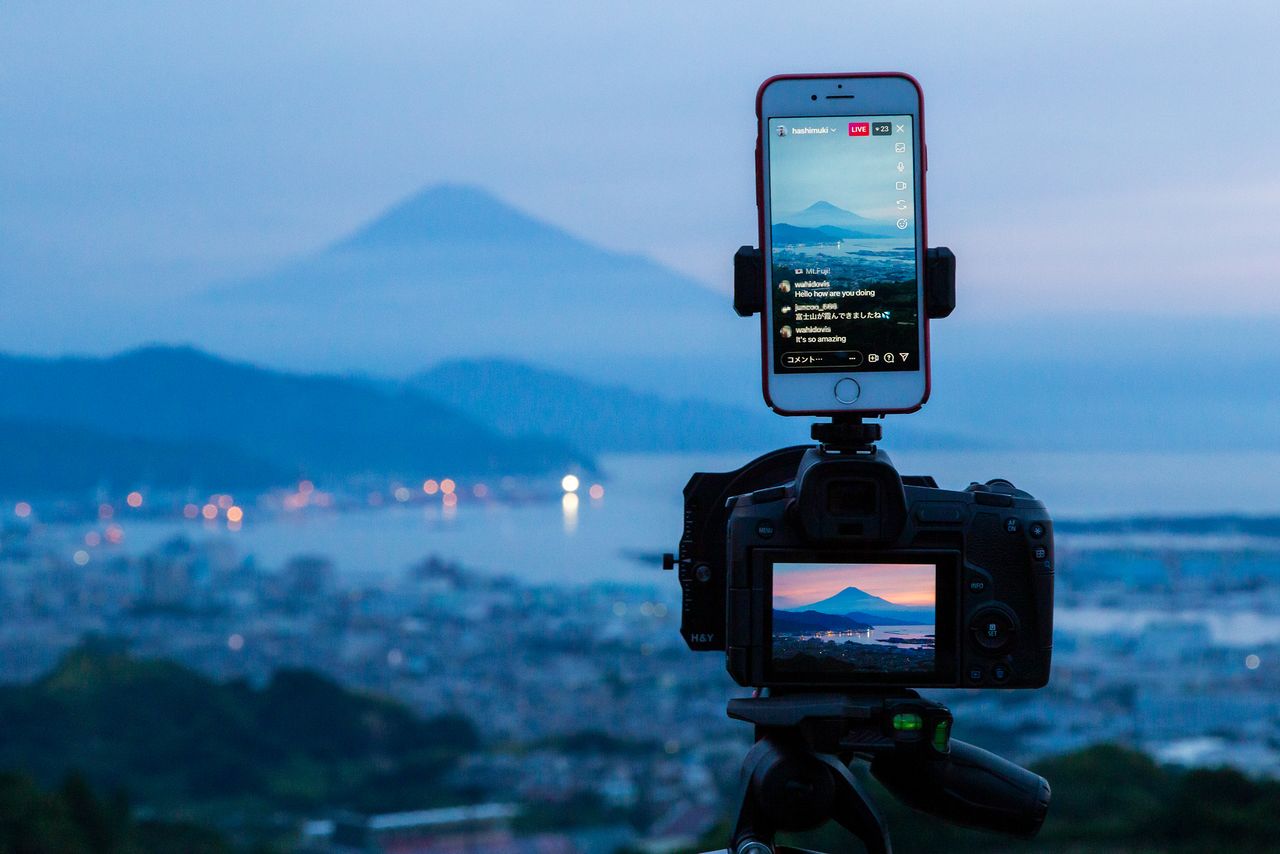
Hashimuki sends live feeds to Instagram direct from his shooting location. His followers include people from all over the world, who may comment in languages ranging from English to Arabic. He uses the second camera for time-lapse videography.
Hashimuki, agreeing that the analogy holds some truth, began speaking animatedly about his love affair with the mountain. “I think of Fuji as a living being and I want to capture portraits of all its moods. It presents different faces at different times of the year, of course, but it can also look completely different depending on the weather, the time of day, its cloud cover, or the look of the stars and the moon in the sky. But simply taking a good photo fails to satisfy me. Like an angler who’s finally landed a big one, I only feel gratified once I’ve shared my photos immediately on social media and made many people happy.”
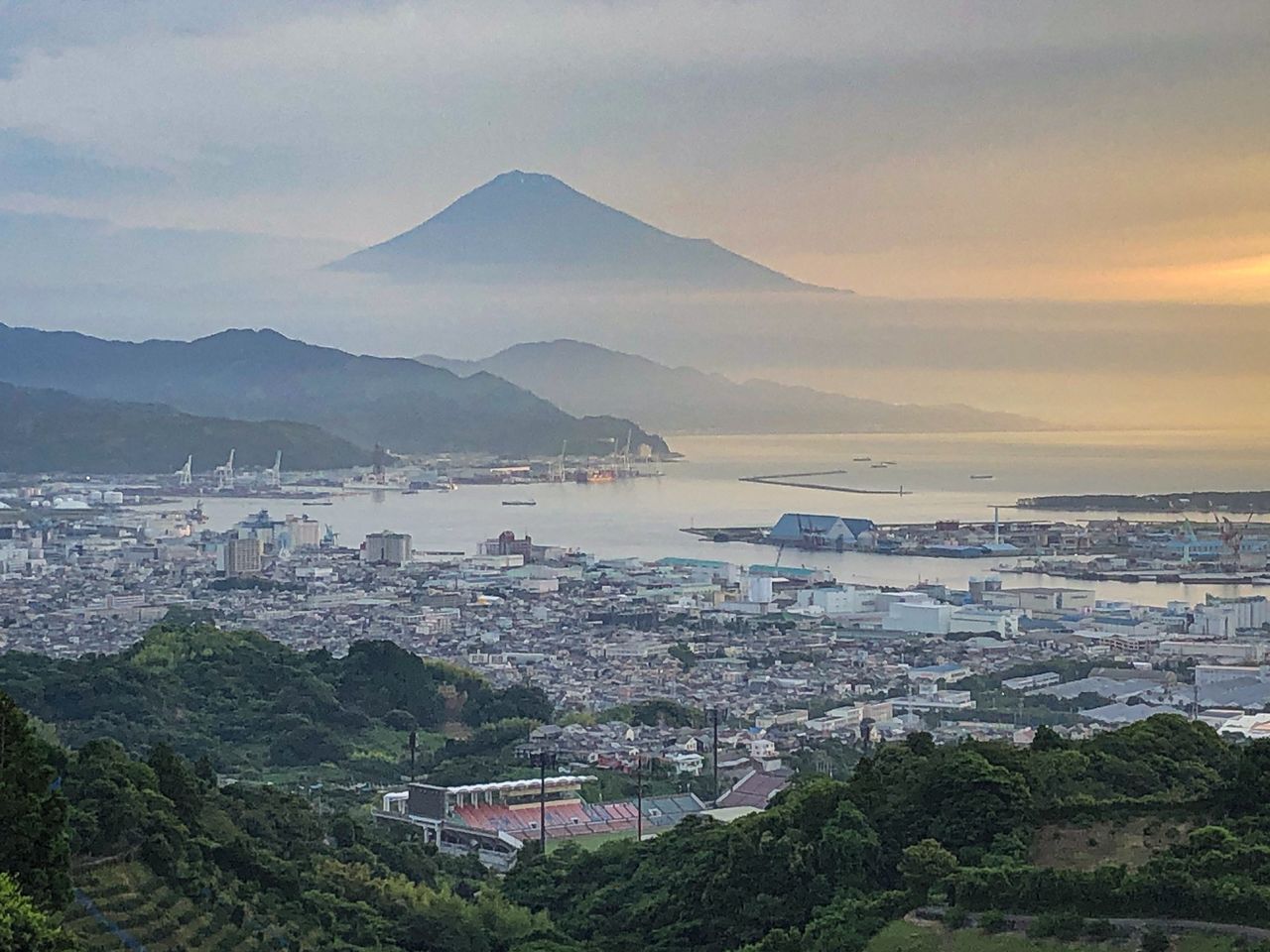
Hashimuki continued to shoot even as he was packing up his gear after livestreaming. He took this photo just before he finally left.
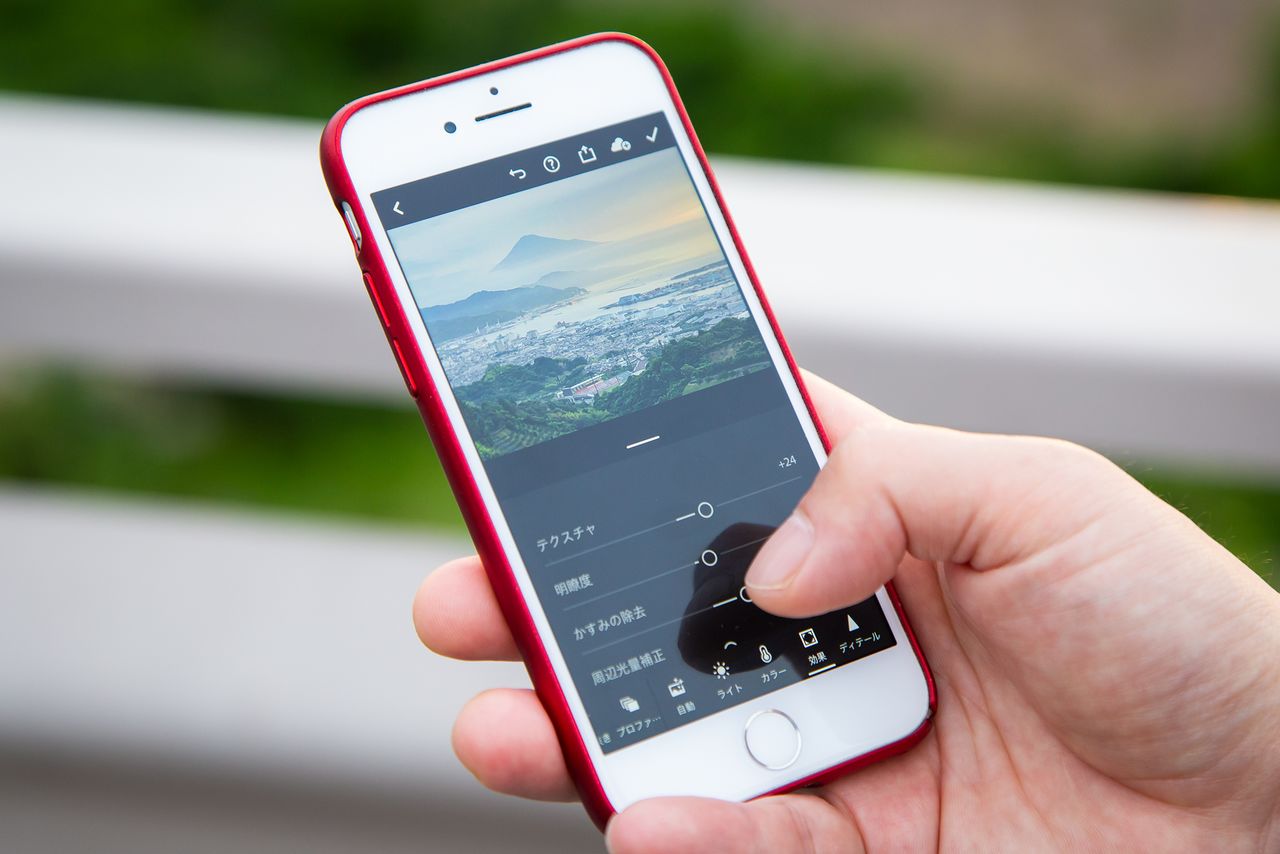
Hashimuki uses a smartphone app to retouch shots on the spot. A thoroughly modern-day photographer, he rarely uses a computer, generally relying on his phone to upload photos for printing or sending to publishers. (© Nippon.com)
Giant Saucer-shaped Cloud Goes Viral
Hashimuki currently operates Twitter and Instagram accounts, where he bills himself as a “Mount Fuji super-photographer.” His photos live up to his superb reputation, garnering likes and retweets from numerous followers, and the compliments come in a multitude of languages.
A photo of a huge lenticular cloud over Fuji taken by Hashimuki in February 2021 was a sensation that spread to channels even outside social media. It was featured on the cover of photography magazines, and a crew from a popular television program even shadowed him on one of his photo shoots. He has been contacted by foreign media presenters, and the photo was prominently featured on news programs in the English-speaking world.
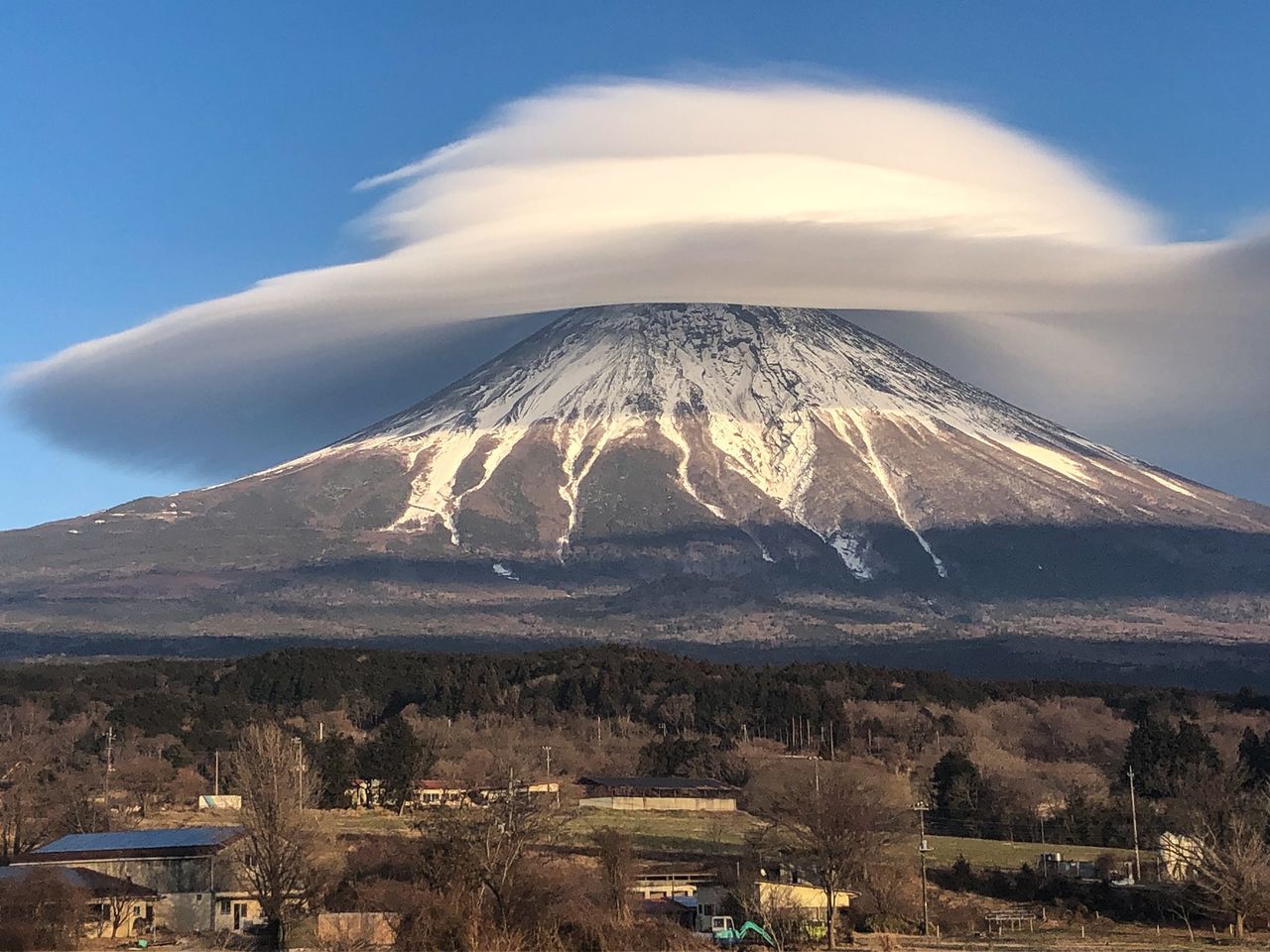
The shot that went viral. It was taken at a superb angle that gives viewers a glimpse of the underside of the giant lens-shaped cloud.
“Having that photo go viral made me really happy, because clouds are what I’m most particular about. Photographs up to now had been heavily influenced by woodblock artist Hokusai’s representation of Fuji, and many of them simply showed the mountain smack against a clear blue sky. But clouds present an ever-changing landscape around the immobile mountain. That’s the kind of new, realistic depiction of Mount Fuji that I want to communicate more widely.”
Hashimuki employs various techniques to convey the movement of the clouds, operating a live feed or using time-lapse video. On site, he works feverishly to catch the mountain’s continually changing look, and his hands are never still.
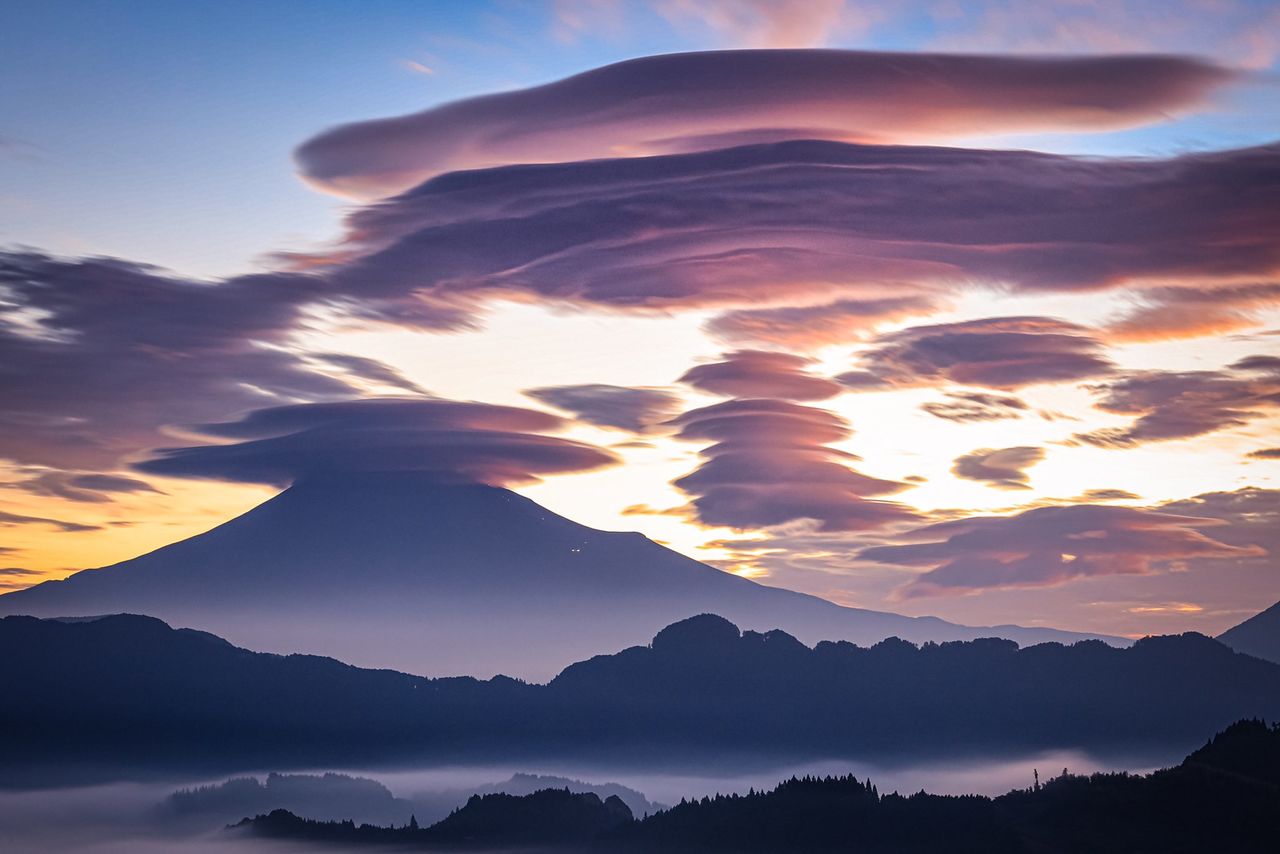
He posted this photo with the comment “It looks just like a fortress.” On the right is a series of lenticular clouds.
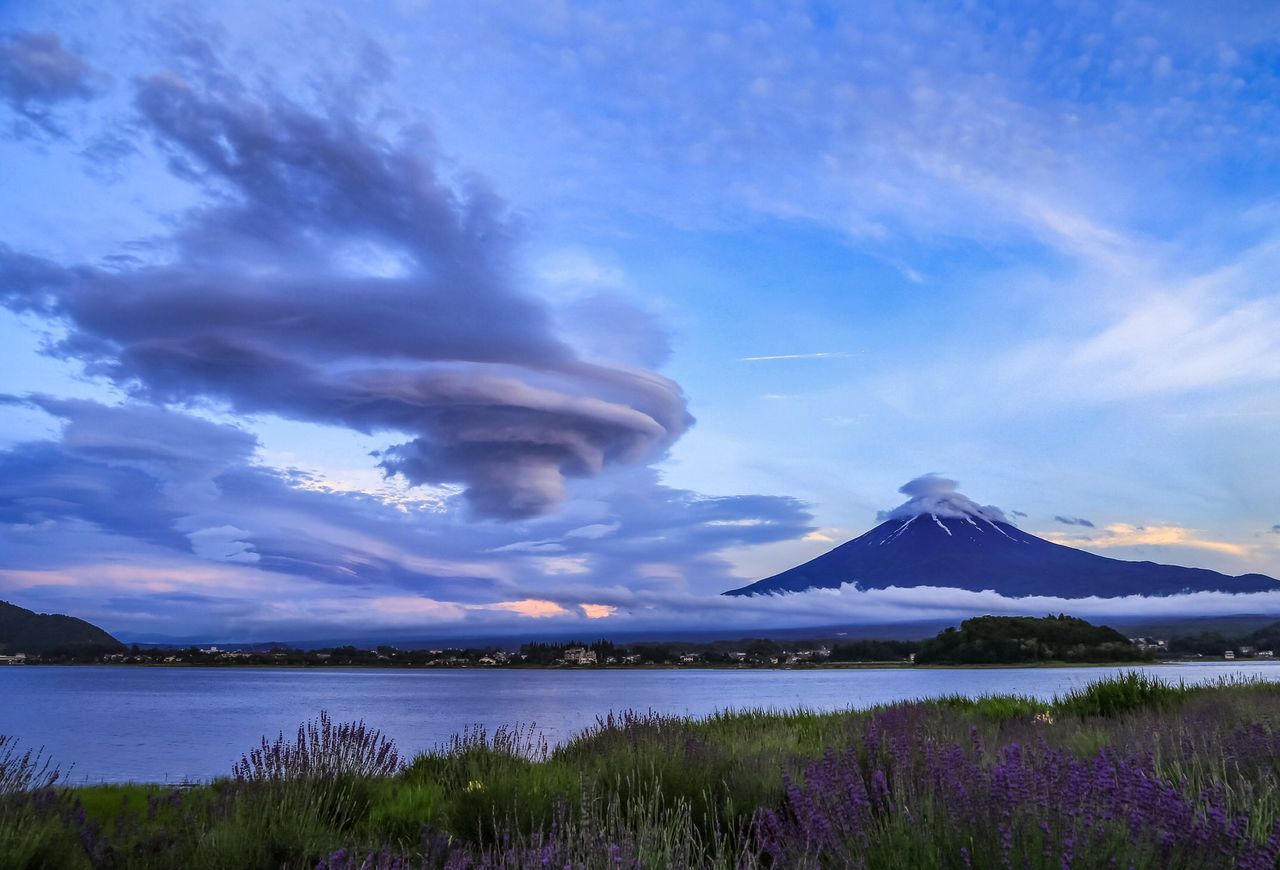
This photo of a “flying saucer” cloud garnered comments from all sorts of people—weather researchers and aficionados of the occult, as well as devotees of shugendō ascetic mountain practice.
Once Bitten, Twice Shy?
A baker by trade, until 10 years ago Hashimuki had zero interest in either photography or Mount Fuji. Born and raised in the city of Shizuoka, where the mountain is visible from just about everywhere, he said he had gotten tired of seeing it all the time. He only climbed it once, in his twenties, suffered altitude sickness, and swore he would never go up it again. So far, he has stuck to his vow.
Around 2010, he began uploading photos of his travels and other pursuits to Mixi, one of Japan’s earliest domestic social media services. His contributions were popular among fellow members, and a friend, seeing that he had a knack for taking great shots, urged him to buy a proper camera. Reluctantly, he acquired a compact, mirrorless camera for novices, and his repute grew from here.
Around that time, a calendar at his workplace with a photo of a majestic Mount Fuji floating in a sea of clouds stole his heart. The photo had been taken from Shimizu Yoshiwara, a local spot just a few minutes away by car, although Hashimuki had never seen that cloud formation. Returning to the place several times, he was never successful in catching the same scene. So, he tried again and again, making note of the climatic conditions and time of day that produced the phenomenon, until one day he finally caught a snow-capped Fuji serenely wreathed in clouds on camera. From that day onward, he was hooked.
That was in June 2013, when Mount Fuji was registered as a UNESCO World Heritage site for its cultural significance and its status as a sacred symbol of the nation.
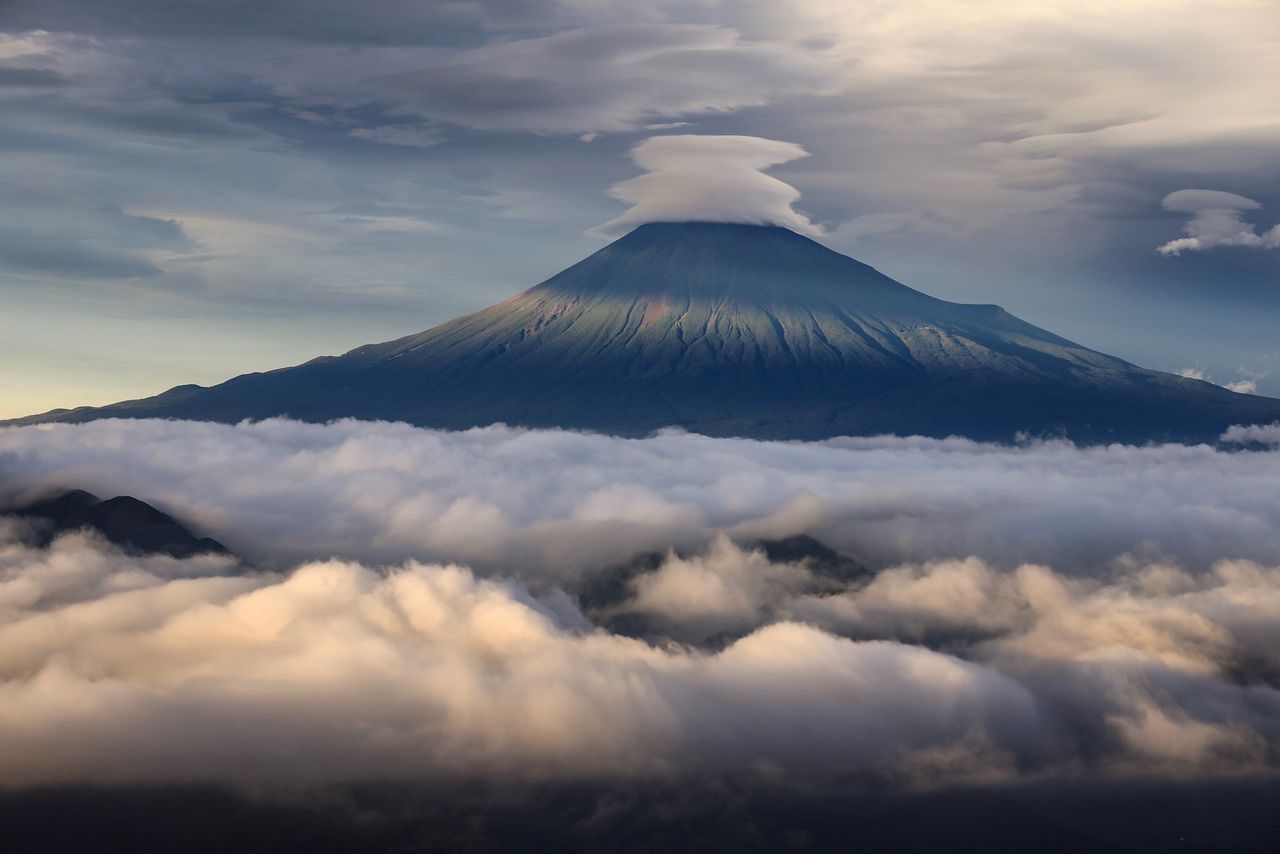
A stack of lenticular clouds atop the mountain in summer, with a sea of clouds at Shimizu Yoshiwara in the foreground.
“There’s a saying that anyone enthralled with Mount Fuji suffers from an incurable disease, since ‘Fuji’ and the word for ‘incurable’ are homonyms in Japanese. In my younger days, I was attracted to the bright lights of Tokyo. But after a few years, I started to realize that Shizuoka is a great place, with abundant natural beauty, and I decided to come back and settle here. It also happened that Mount Fuji had just been declared a World Heritage site. I wanted people in Japan and around the world to know more about this mountain, Japan’s highest peak and the pride of local residents, so I decided to get serious about photography.”
Not content with just showcasing his photos on Mixi, Hashimuki branched out to Twitter to reach a global audience. In the meantime, he had gotten interested in photographing the Milky Way and the stars in the nighttime sky, so he upgraded his equipment to a full-size single-lens reflex camera with a highly sensitive sensor ideal for night photography. Well-prepared for all conditions now, he made it a habit to photograph Fuji every weekend.
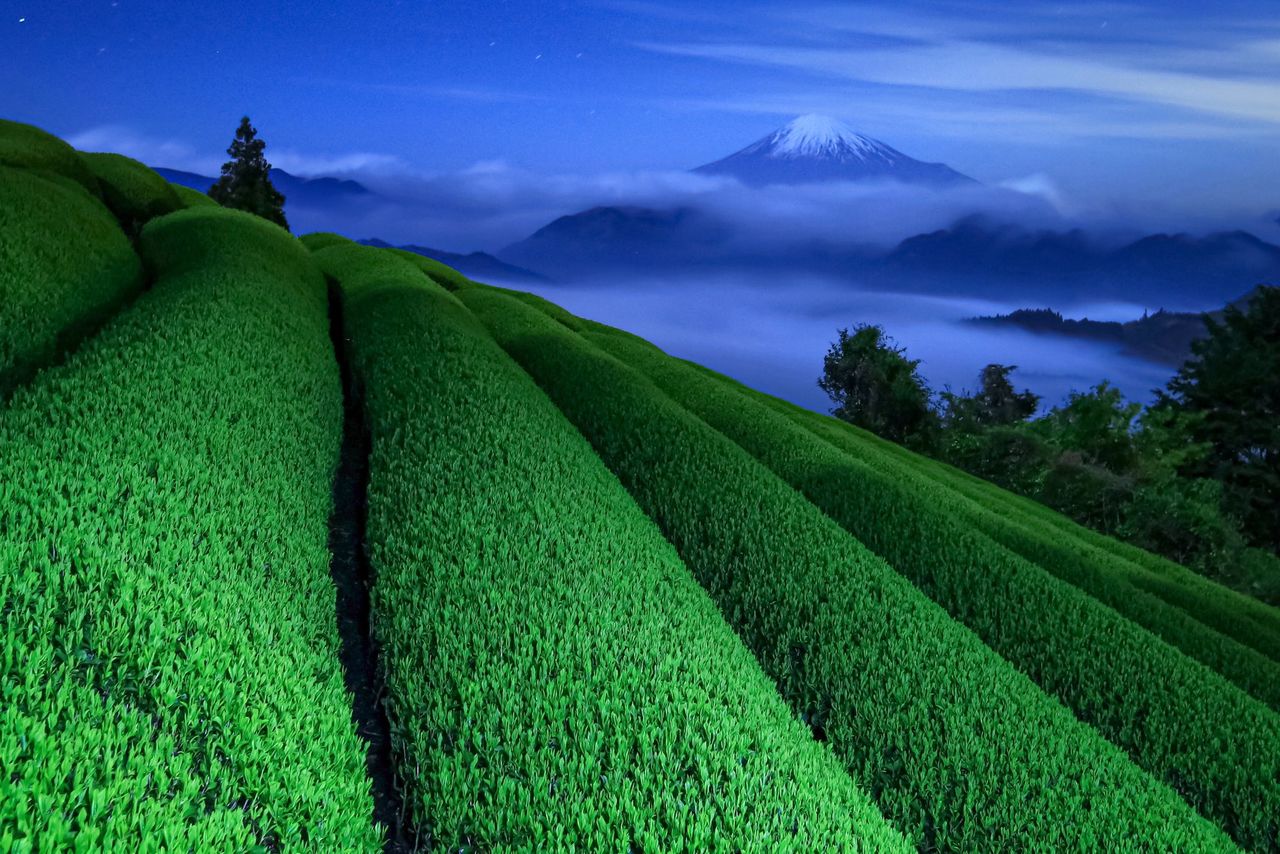
Shizuoka is famous not just for Mount Fuji but for green tea too. This shot was taken from a spot where the tea bushes were illuminated by street lights, with the cloud-surrounded mountain in the background.
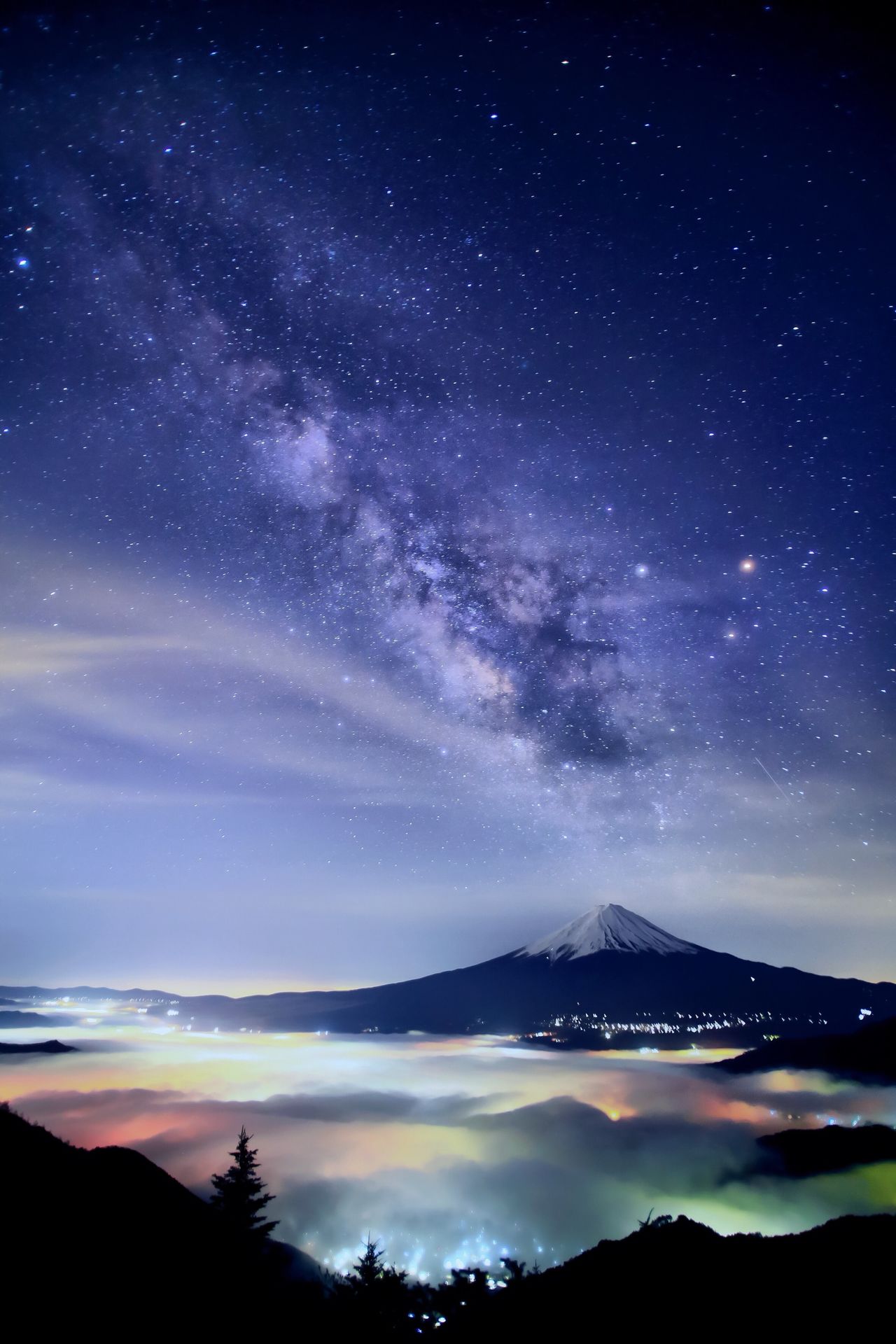
Hashimuki’s nighttime photos are also renowned for their beauty. Here the mountain, the Milky Way, and a sea of clouds underlit by city lights create a breathtaking harmony.
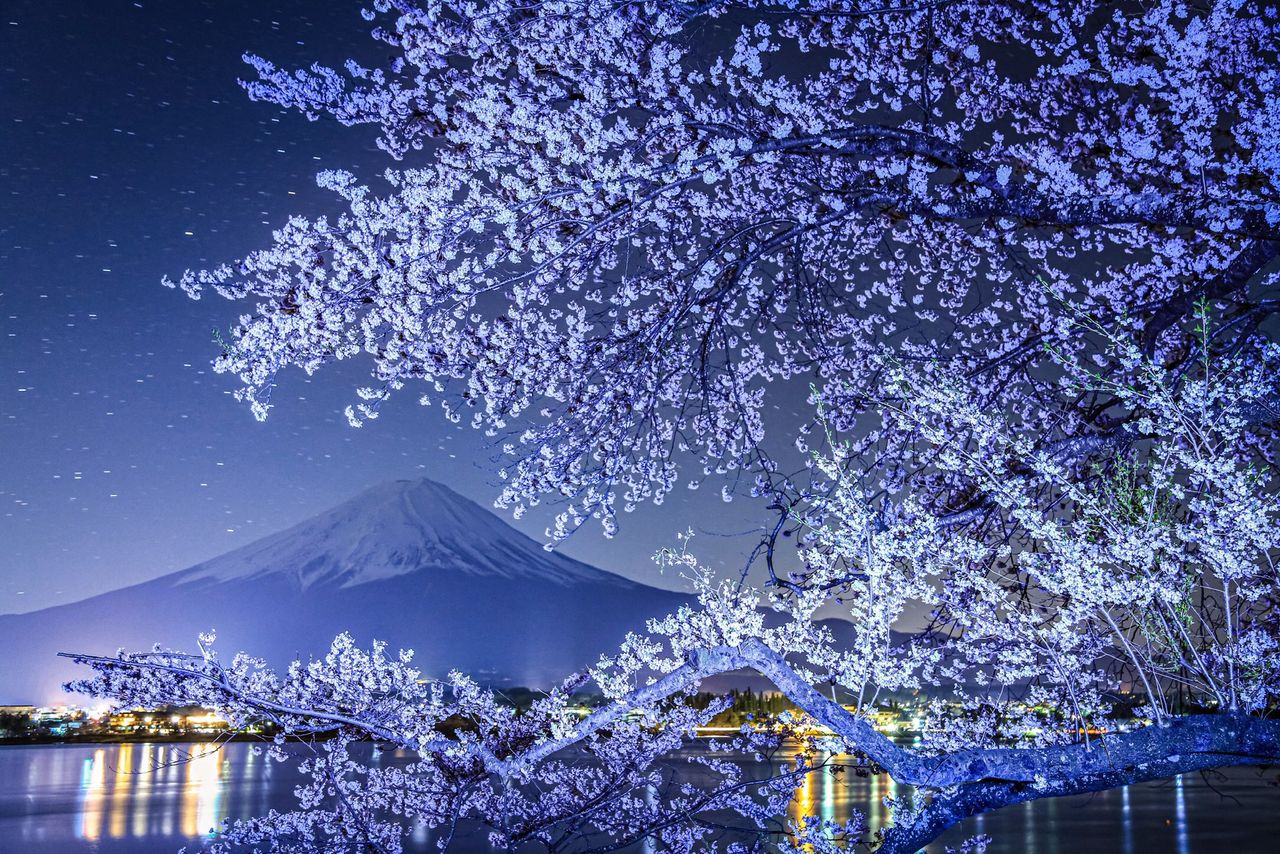
Seasonal touches also feature in Hashimuki’s photos. Always searching for the perfect location, he composes his shots with care.
“My Way”
Bakers are early to rise, a habit that was ideal for Hashimuki the photographer. Used to leaving home for work in the early morning hours, he did not find getting up to take photos of Mount Fuji at dawn a hardship. During his breaks at work, he checked weather radar apps and strategically positioned live camera feeds of the peak. His work schedule meant that he had plenty of time to take photos at dusk on weekdays too, so he would often head to favorite shooting locations if he knew that interesting cloud formations were on the way. He was truly hooked on the mountain.
Just three years after Hashimuki began photographing Fuji, one of his photos was chosen for the Tokyo Camera Club’s Top 10 of 2016. The club runs one of Japan’s premier photo sites, and being included in the Top 10, an honor reserved for the most popular photos of the year, is viewed as a gateway to success for rising photographers.
As a result, Hashimuki was frequently invited to contribute writings or photos to camera magazines or how-to photography manuals and to appear at events sponsored by camera manufacturers. His Shin Fujisan kei (New Views of Mount Fuji) calendar, on sale for the first time in 2020, was a runway hit, and he expects to publish a photo collection this summer. After just eight years in action, this part-time photographer has compiled an impressive record.
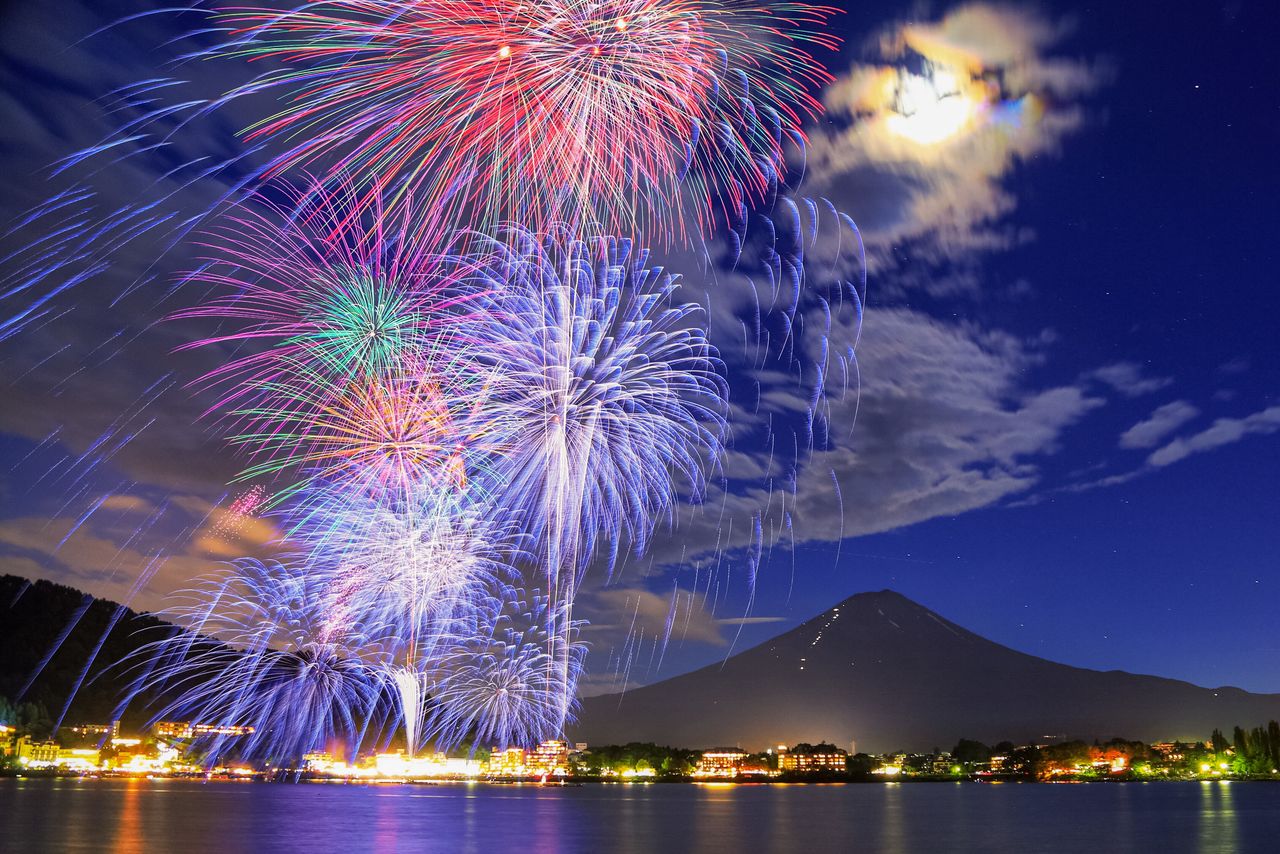
This 2016 photo of summer fireworks with Mount Fuji silhouetted in the background was selected for the Tokyo Camera Club’s Top 10 of the year.
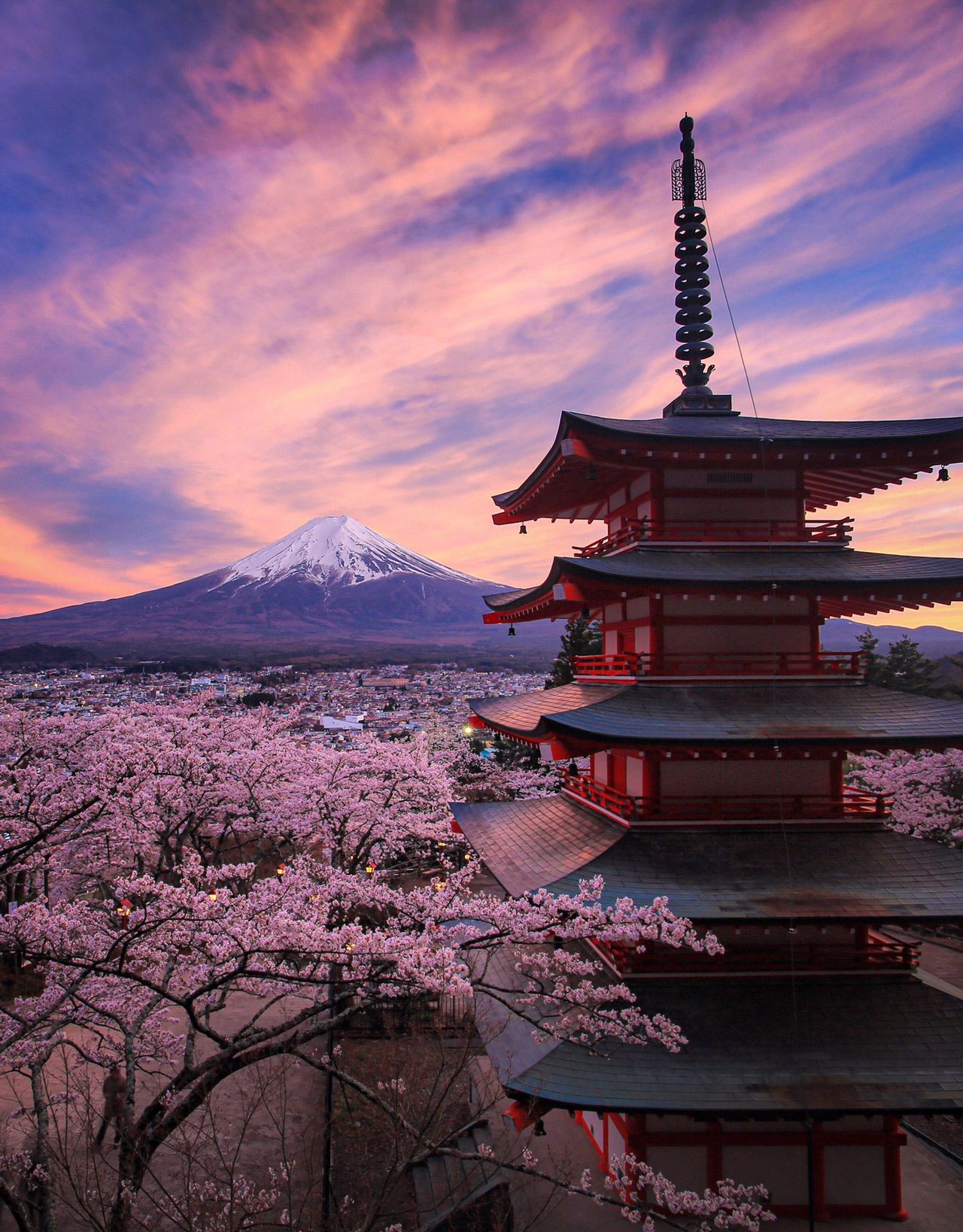
One of the most iconic angles of Fuji, cherry blossoms, and a five-story pagoda, viewed from Arakurayama Sengen Park, in the city of Fujiyoshida, Yamanashi Prefecture. Visitors flock here to get a perfect shot, but Hashimuki takes it to a different level entirely.
As his reputation as a photographer grew, Hashimuki had more opportunities to show his work at exhibitions and sell photo collections. Does this mean that his images could soon disappear from social media? “Unthinkable,” says Hashimuki. “I can’t imagine not uploading my creative endeavors.”
The young artist goes on. “Countless photographers have made Mount Fuji their theme, and few can surpass Ōyama Yukio, the master of the genre. That’s why I want to make my reputation by doing things my way, via social media. It’s this approach that has given me success so early and broadened my reach. Besides, uploading photos that I’ve just been thrilled to take in real time allows my followers to share an experience that can’t be had from visiting an exhibition or leafing through a photo collection.”
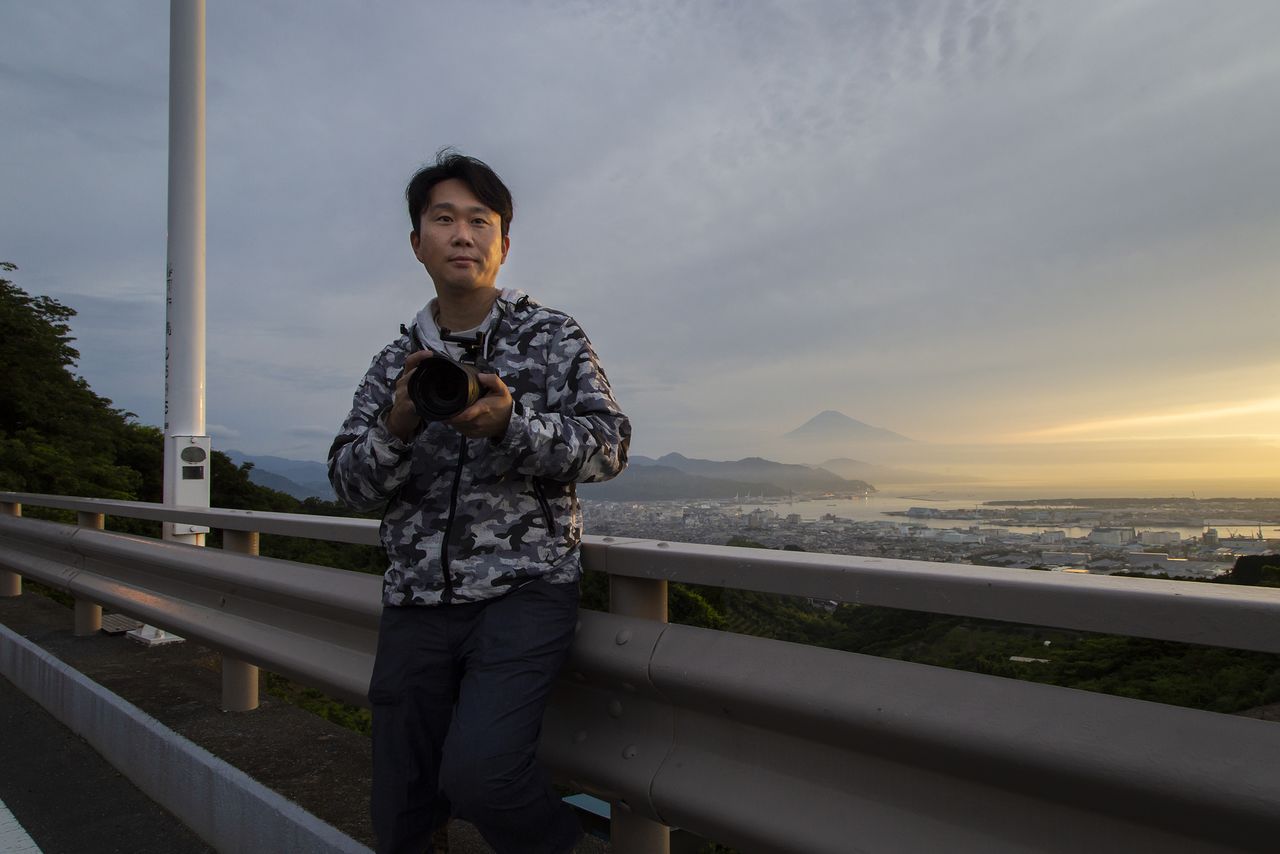
Hashimuki muses that without social media, he might not have continued taking photos. (© Nippon.com)
A Fuji Network
Hashimuki says that his greatest reward is the network of fellow Fuji lovers he has developed through his avocation. These include people he has connected with through social media and individuals he encounters in person while out shooting or at photo events. His photo friends are people of all ages from all over who he would never have met without the intermediary of social media. He says that the enjoyment he gets from chatting with others while out shooting more than makes up for the hardships of photographing outdoors day after day. And thanks to this network, he was even able to charter an aircraft for aerial photography.
“To me, Fuji is the biggest network of all. It’s helped broaden my world. The huge mountain is a sacred presence, and it’s easy to see why it’s been an object of veneration since ancient times. I myself never fail to worship at Sengen Taisha shrine in Fujinomiya. The shrine’s tutelary spirit is [the female kami] Konohana no Sakuya Hime, so to me, Fuji has a feminine aspect and I want to continue photographing its beautifully expressive face.”
At the start of the year, Hashimuki visited the shrine and wrote this wish on a votive tablet: “I want to publish a photo collection.” Lo and behold, a publisher sounded him out soon after, and his dream is on the way to becoming reality. Hashimuki loves Fuji with all his heart, and it is clear that the mountain loves him back.
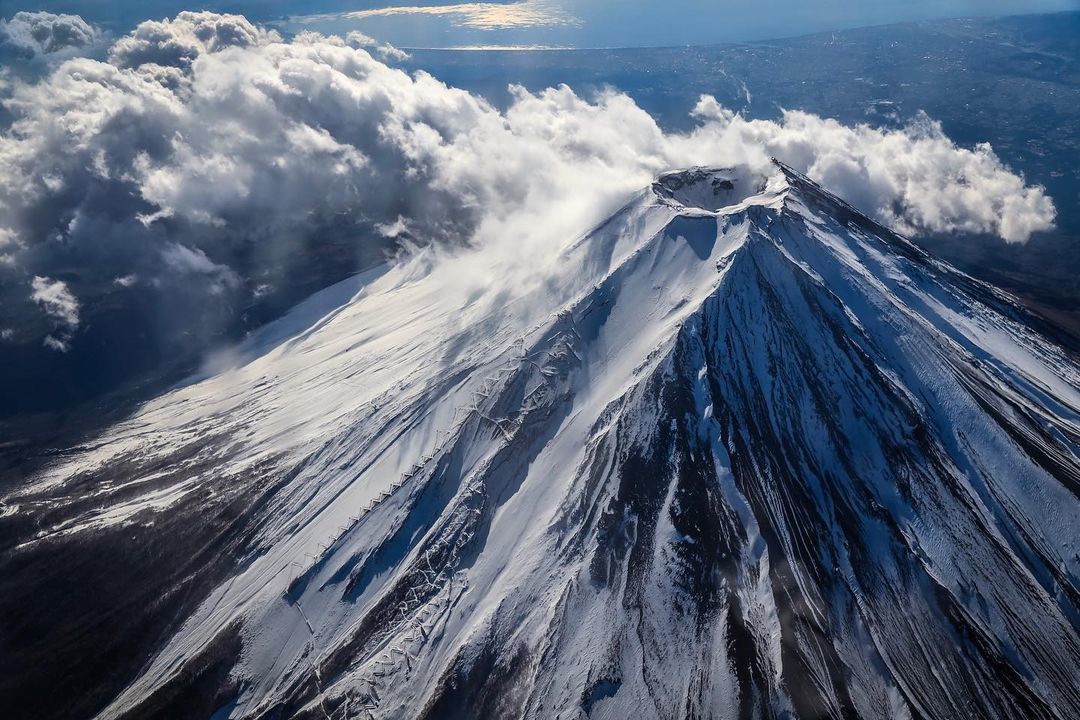
Hashimuki and fellow photographers pooled funds to charter a Cessna aircraft, from which this atmospheric shot of Fuji’s crater was taken.
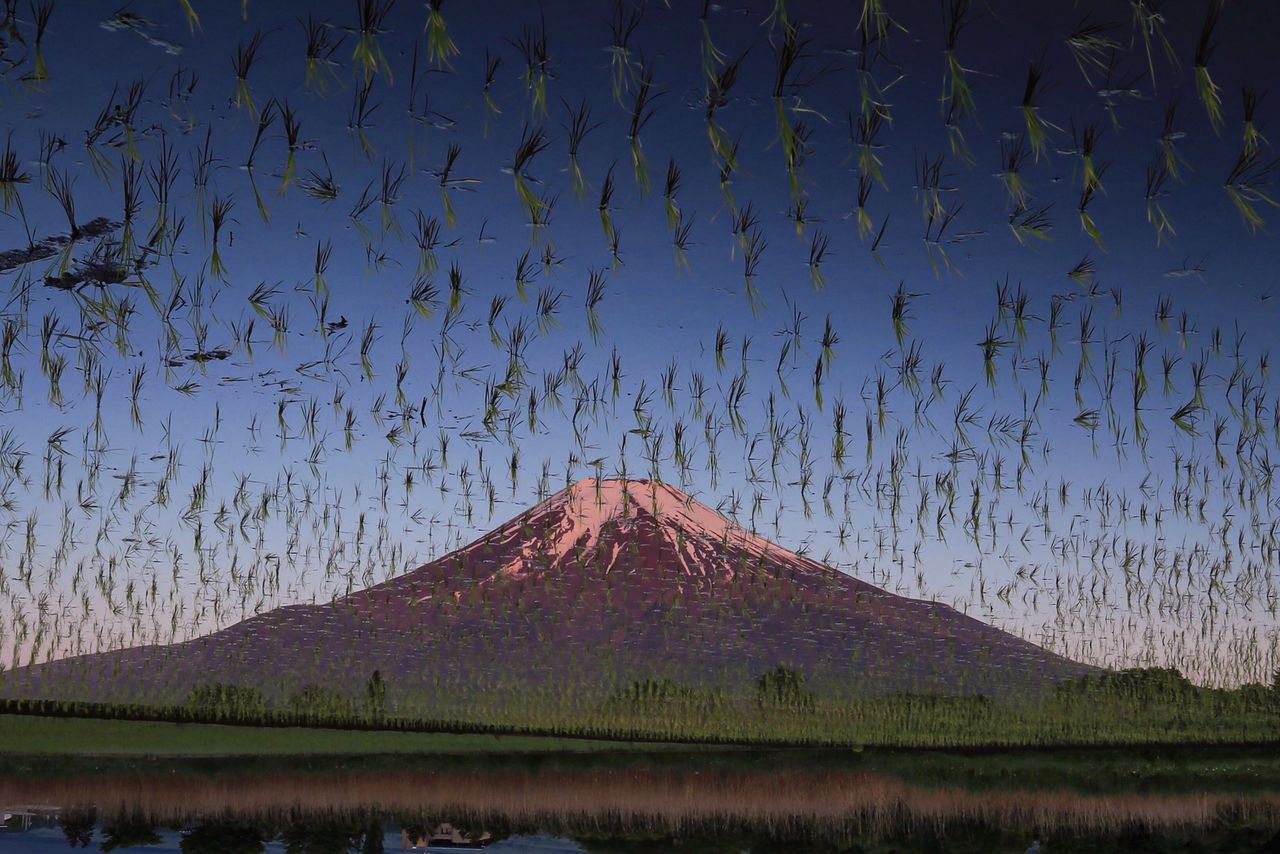
Many social media followers wondered whether Mount Fuji had been struck by a plague of locusts. In fact, it’s a shot of the mountain’s upside-down reflection in a rice paddy. Hashimuki also tries to take unusual photos of the mountain, to pique the interest of people other than Fuji aficionados.
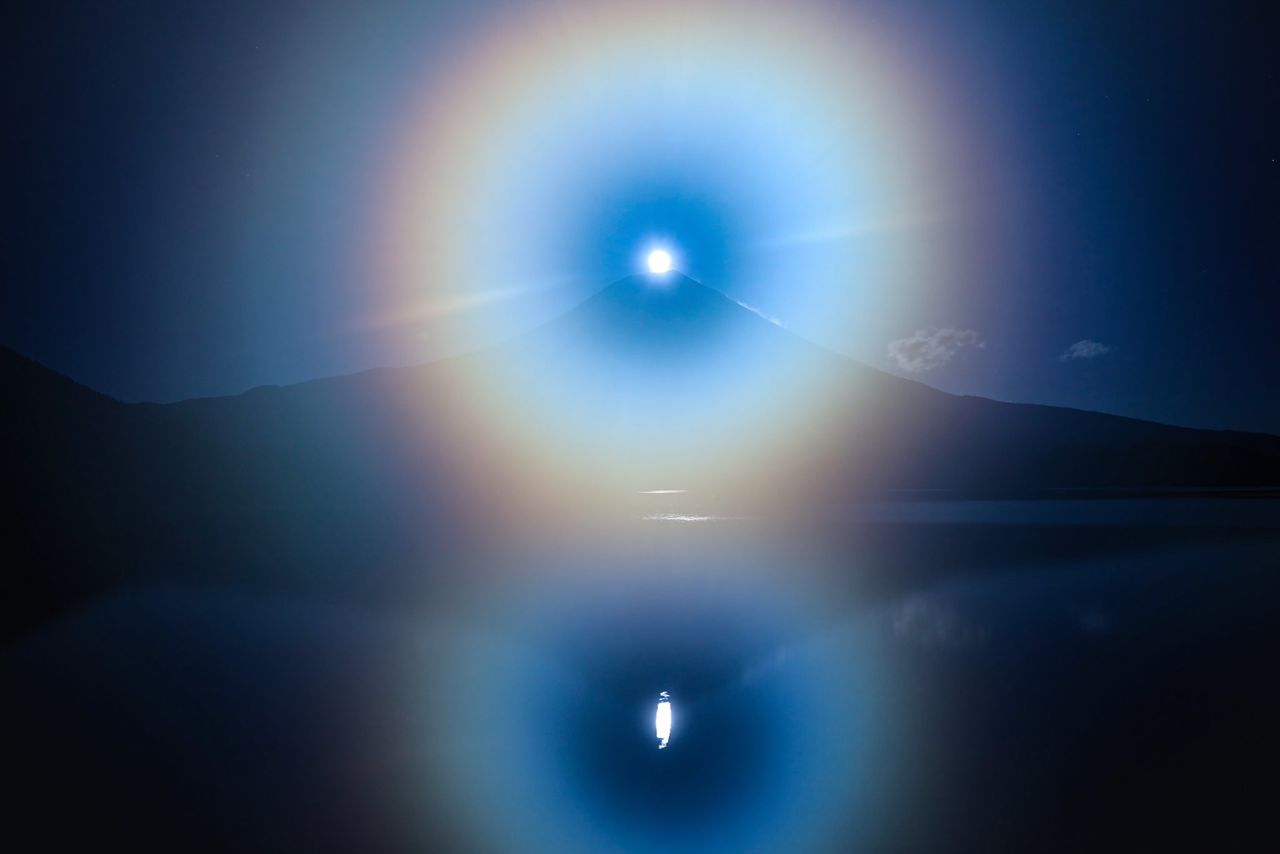
While “Diamond Fuji,” where the sun is juxtaposed over the mountain’s peak, is a well-known view, Hashimuki created “Pearl Fuji,” showing the moon directly over the mountain.
(Originally published in Japanese. All photos © Hashimuki Makoto except where otherwise indicated.)
